CHANGE
Technology is changing our world at an alarming rate. But we don’t necessarily need to be alarmed. Like anything in life, change can be good or bad. Occasionally I write about technology, such as in my embracing technology post.
I decided to start posting anything technology related to a category named, The Digital Life. This will be the first one, an overview on how I am using technology with my enjoyment of music.
As a kid growing up in the 50’s and 60’s we had little technology and a lot of it at the same time. During the 100 years before my birth, technology grew at an astronomical rate, changing almost everything in our daily lives.
By today’s standards, the technology was meager.
When it came to consumer goods most watches had hands and had to be wound-up each day, we had a small black and white TV, a small record player for the entire family, we had small 9 transistor radios for personal portable use, my family didn’t have a telephone, we did mathematical calculations with pencil and paper or a mechanical slide rule for complex work.
LIVING WITH THE LACK OF TECHNOLOGY
We were fine with this “lack” of technology. If we wanted to talk to someone, we walked to his or her house. If they lived far away, we wrote a letter. Life was simple and we spent lots of time doing things like playing sports and surfing. There were only about 5 TV stations in large metropolitan areas, meaning we spent little time watching TV. Most families spent Sunday nights watching Lassie, The Ed Sullivan Show, and Bonanza. It was family time when families actually spent quality time together.
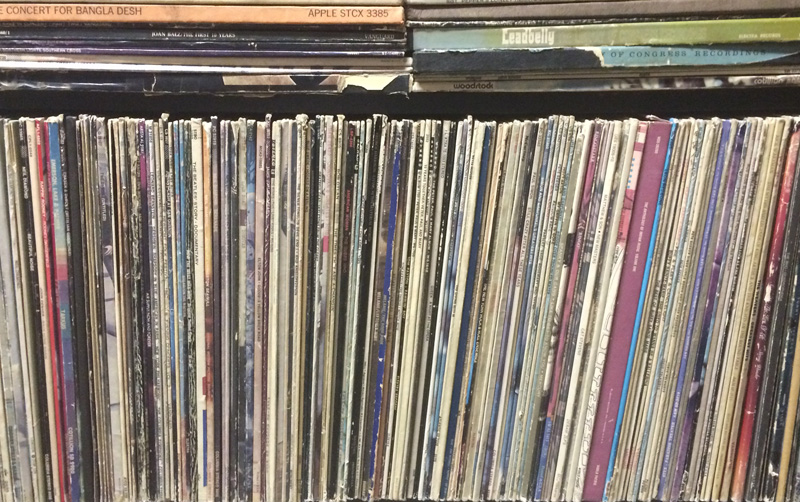
I started buying vinyl record albums in the 60’s and continued through the 70’s and bought a few in the 80’s. After that, there was little new music that interested me. The problem with these albums is they take up a lot of space, a quality turntable will only play one record at a time (automatic changers can cause scratches), and they aren’t portable.
MINIMALISM
I hear from a lot of ultra-light backpackers who say they want to apply their ultra-light backpacking philosophy to their entire life. They say that material goods are not good for the soul or even for society.
I don’t agree with this. Getting rid of stuff you don’t need is good, but material things aren’t necessarily bad by nature. With this in mind, I wanted to reduce the footprint and the inefficiency of my record collection; records that have been with me for 40, 50, and even more years.
DIGITIZING MUSIC
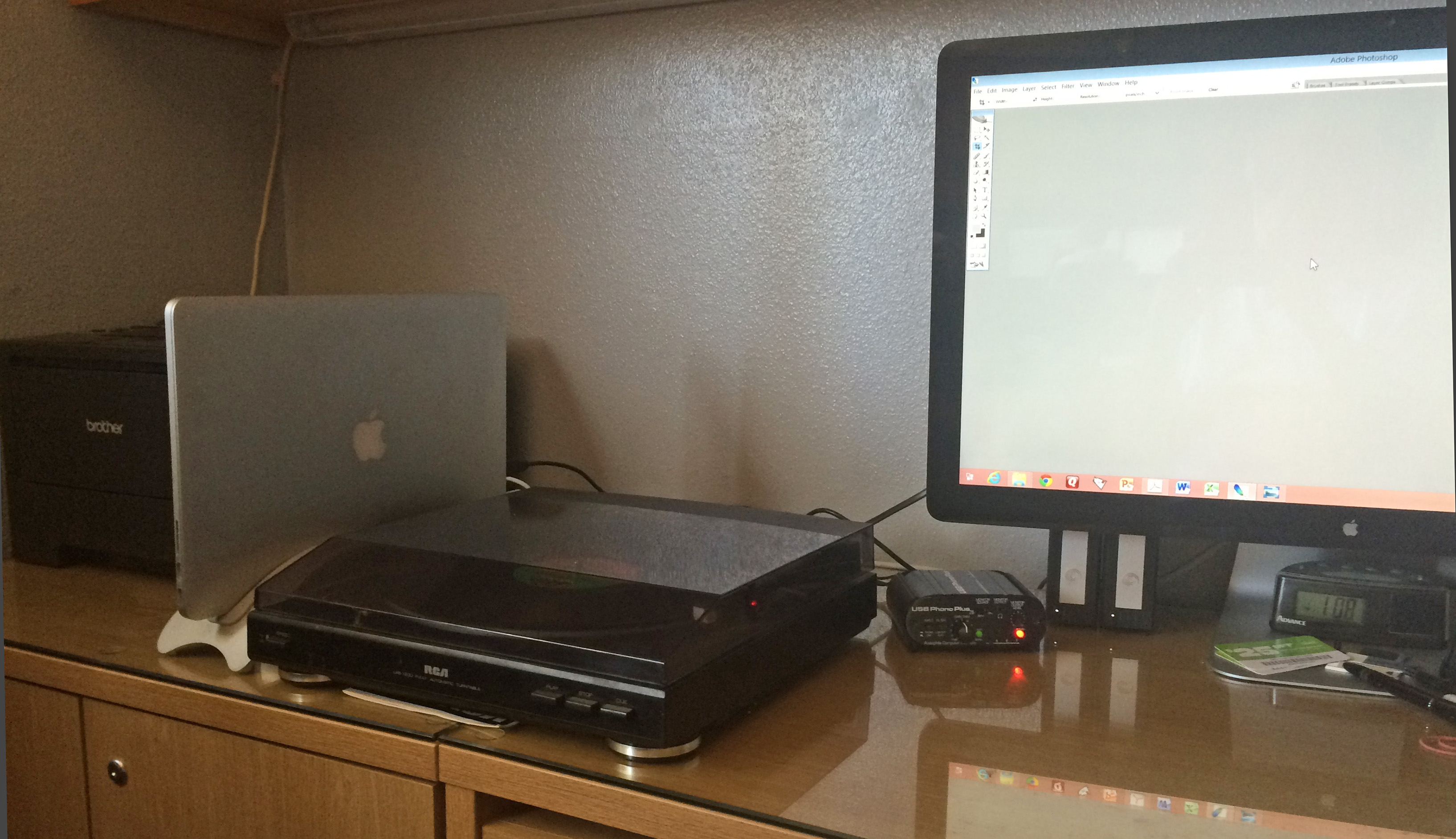
I decided to digitize my record collection. If I did this I could get rid of the turntable, save a ton of storage space, and make my music extremely portable. Purist audiophiles will tell you that sound quality will diminish by recording vinyl albums into digital form. I disagree, or perhaps my hearing is extremely poor.
This website may be compensated for linking to other sites for sales of products. As an Amazon Associate I earn a small fee from qualifying purchases at no additional cost to the purchaser.
ASSEMBLING THE COMPONENTS
Two things are needed to digitize records: hardware and software. The music must be transferred to the playback device and software that converts and stores the sound waves.
HARDWARE
There are two critical pieces of hardware: the Source and the Destination.
The source is the turntable and any required connective pieces, which is usually an amplifier or a pre-amp. On my home stereo system, this required me to connect my laptop to the output connections of the amplifier with a special box and cables. It was fiddly and meant my computer had to be connected to the stereo – not very efficient if I wanted to record music while working.
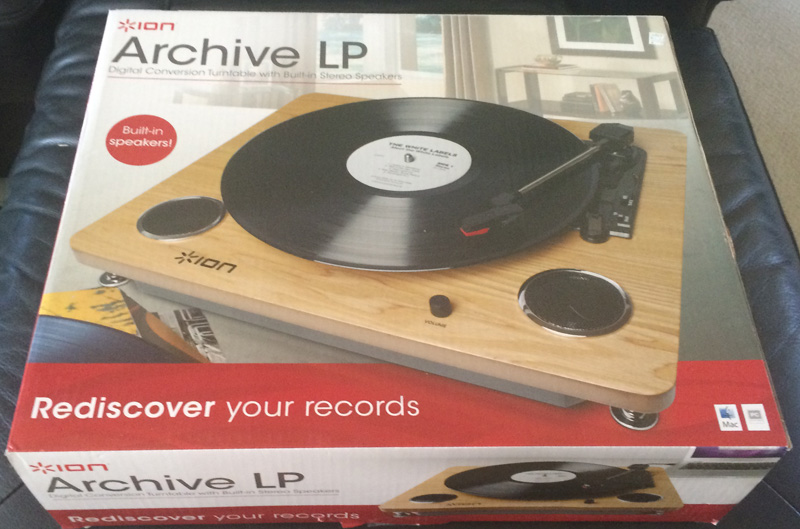
So, I bought an inexpensive USB turntable that was portable and could be used in my office. Recording quality was poor and the tone arm pressure could not be adjusted.
Auto Amazon Links: No products found.
I did some research and decided to purchase a pre-amp and move the entertainment unit turntable into my office. Wow! Much, much better.
Auto Amazon Links: No products found.
Output Devices
Applied Research And Technology USP Phone Plus
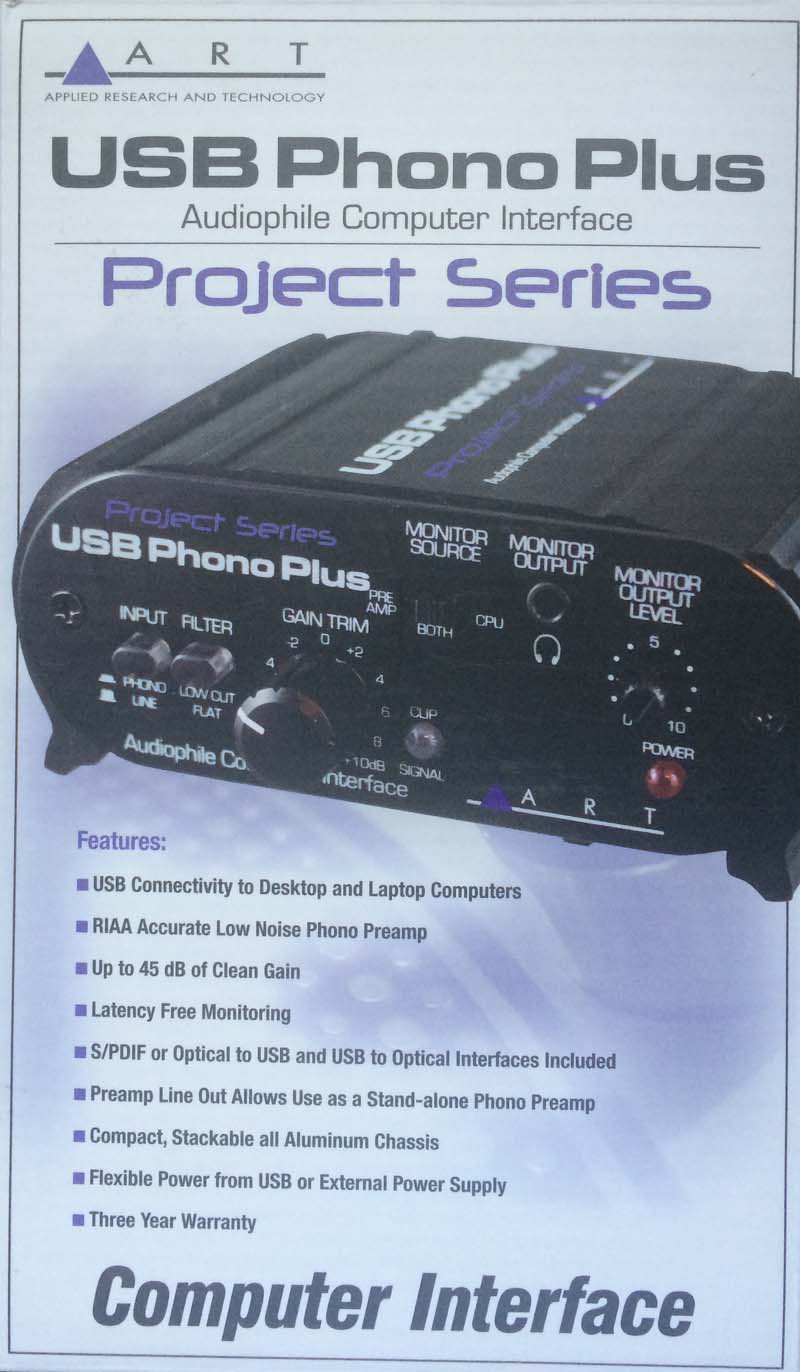
From the ART website
The USB Phono Plus is a high quality USB audio interface with a built-in phono preamp. It acts as an interface between your computer and a wide variety of analog and digital sources. The analog inputs are switchable between Phono and Line level signals and a Low Cut filter removes rumble and wind noise while leaving the audio pristine. The front Gain Trim control and Signal/Clip LED allow you to optimize the analog to digital converter for a wide range of input sources. The front panel USB Monitor/headphone jack and the Optical Output on the rear panel can monitor the audio output from your computer. The USB Monitor/headphone jack can also provide zero latency monitoring of the input source for easy cueing of records and tapes. The built-in low noise Phono Preamp circuit is highly accurate and precisely conforms to the RIAA standard. The Line Out jacks are always connected to the input preamp signal for source monitoring or to allow use as a stand-alone phono preamp.
RCA Fully-Automatic Belt-Drive Turntable
I’ve had this for years. It has outlasted several entertainment systems.
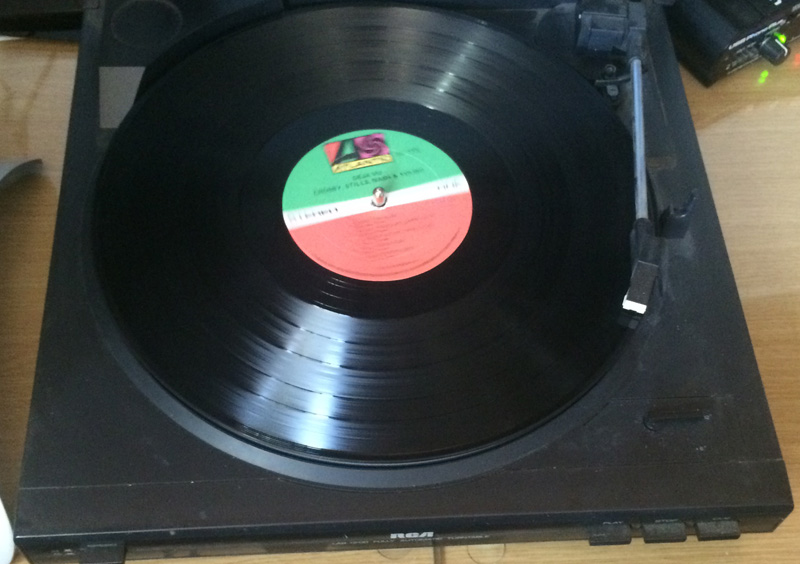
Not sure what model it is, but the sound quality is good.
Input Devices
Pretty simple for me. My iPhone, iPad, and iPod store the music.
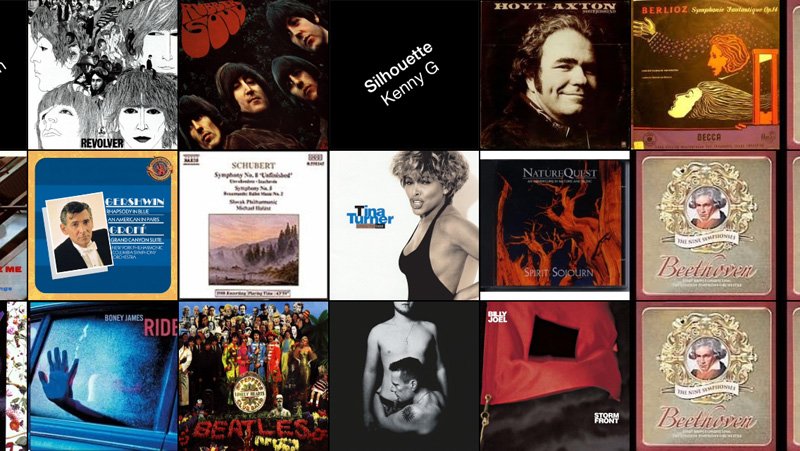
The collection is too large for my iPhone, so I keep my absolute favorites on it. The iPad and iPod both contain the entire library. The iTunes software makes it easy to manage all my music.
SOFTWARE
This is the most difficult part of the digitizing equation. Just like the hardware dilemma, there are a couple of pieces of software that are needed: Recording Software and Software to get the music on your portable device. Some recording software will not record in the format needed to transfer the music to your device, so you could need a third piece of software, a conversion program.
Like many people, I started out with the Audacity free software. Not perfect and it couldn’t get ride of the clicks and scratches on some of the records from decades of listening pleasure. There were a few other things I didn’t like, but those are too numerous to list. Besides, what you get is what you pay for. Free is free.
So as is said, “Google is your friend.”
There were some pretty expensive packages out there in Internet land; way more than I wanted to spend. Most of the less expensive options had so many mixed reviews it was next to impossible to determine what was good or bad. I finally decided on a program named VinylStudio.
VinylStudio
The program is available for Macs or Windows. I opted for the Mac version and downloaded it from the Mac App Store for only $29.
The program has many more features than I will ever need, but I’ll go ahead and highlight what I like about it without getting into too many details. Bottom line is it does everything I need it to do and there is really nothing I don’t like.
There are 4 steps I use to record each album
- Record the album
- Split the tracks
- Cleanup the audio
- Save the tracks
Recording is simple
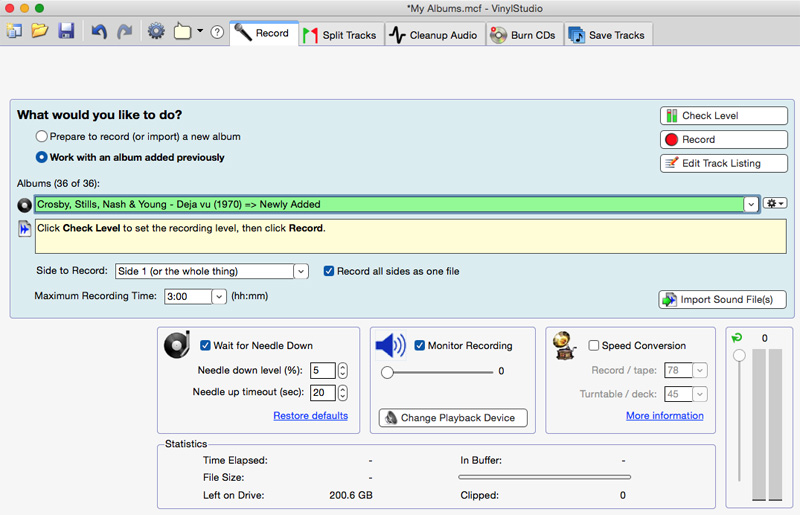
Enter the Artist name, Album Title, Year of Release, and Genre. Click the create button and the album is created.
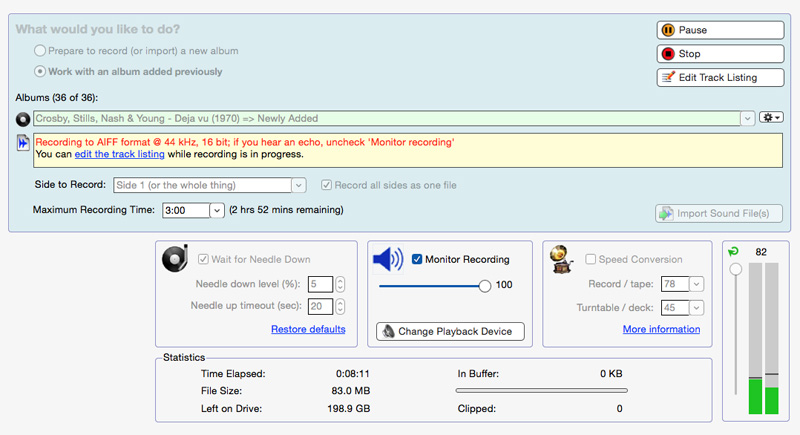
Next click the record button and sit back. I usually listen to what is being recorded. The software records the entire album, no stopping to record individual tracks.
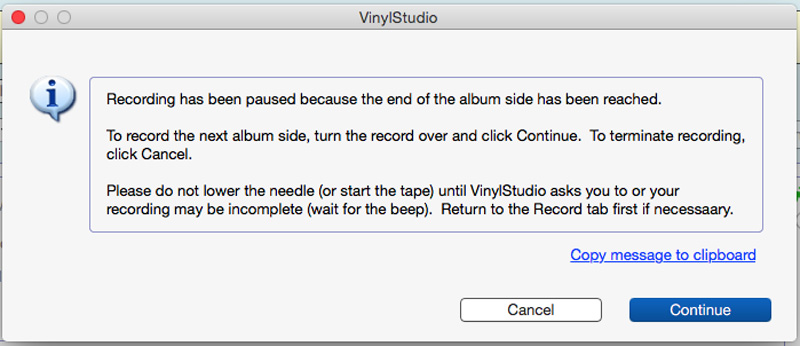
When one side of the album is done, the software pauses and waits until you flip over the record and then starts recording again once the Record button is clicked.
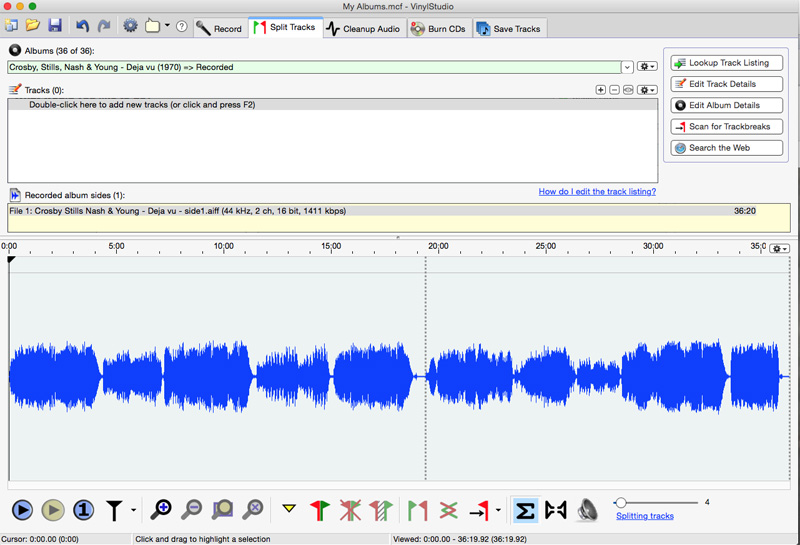
There is a lot more that can be done in this module, but for most users this covers what you need to know.
Splitting Tracks
The next step is to separate the tracks. This is somewhat automatic.
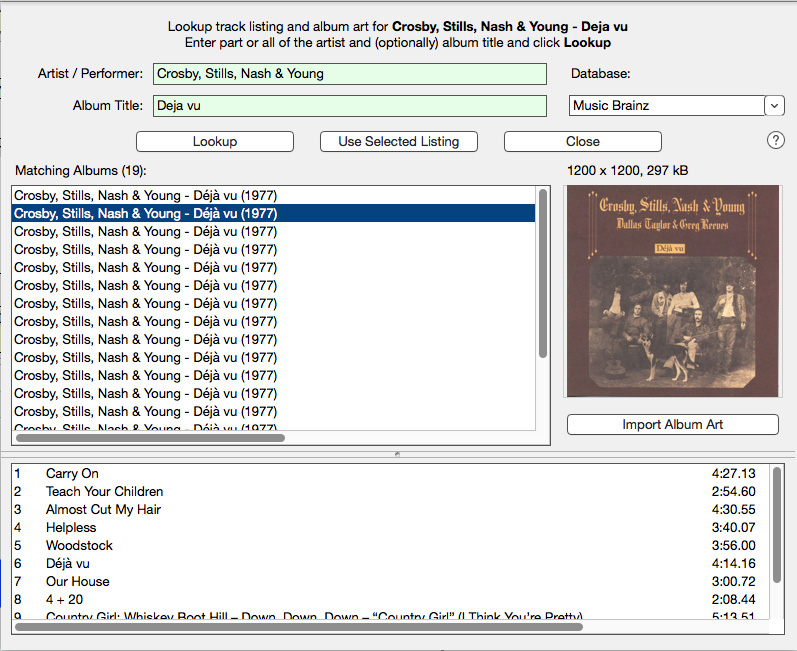
VinylStudio will search the Internet for databases that have the track names and length. Most are from CD’s, so the timing is usually a little off and the dates are usually the date the CD was released, not the vinyl album. But it is quick and easy to drag the track breaks to the proper position.
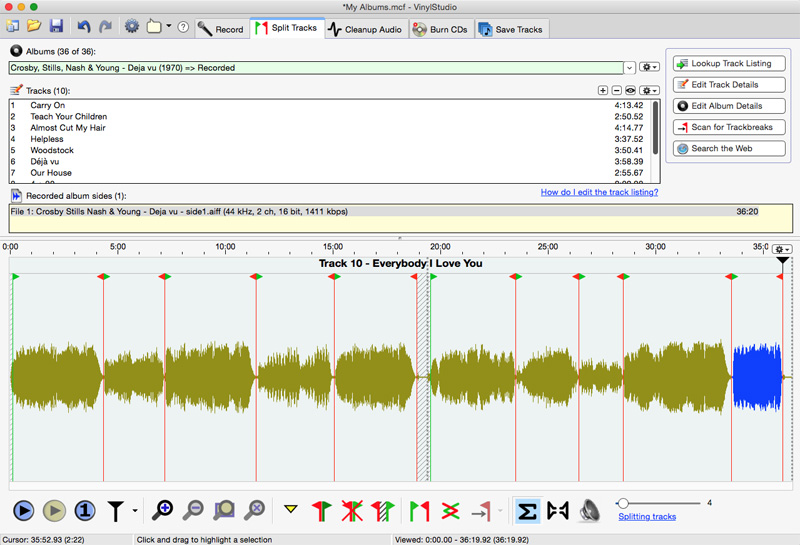
If I am not sure exactly where the break is, I can listen to it and watch the waveform to find the exact break. Like most recording software, the audio is visually recreated using waveforms. About 75-80% of the time, VinylStudio finds the track breaks, track names and the length. The rest of the time I must type in the track information and determine the break points. This really doesn’t take long and I have figured out all the shortcuts. VinylStudio also searchs for Album artwork, but probably only locates it 50% of the time. If VinylStudio doesn’t locate album artwork, you could import a JPG file, but I just wait until the album is export into iTunes and use the “Get Album Artwork” button in iTunes to import the art. If iTunes can’t find it, I download the image from the Internet and then add it using the “Get Info” screen in iTunes.
Edit: April 21, 2015
On of the options for splitting and identifying tracks, plus importing artwork is discos.com. Using this database requires registering on their site, which is free. I am not one to happily register on websites, but I went ahead and registered. Discogs has identified almost every single album and is really the absolute best option when working with VinyleStudio. The other good news is that I haven’t received any unsolicited emails or spam from them.
Audio Cleanup
After the tracks are listed, the software can search for clicks and scratches and deletes them.
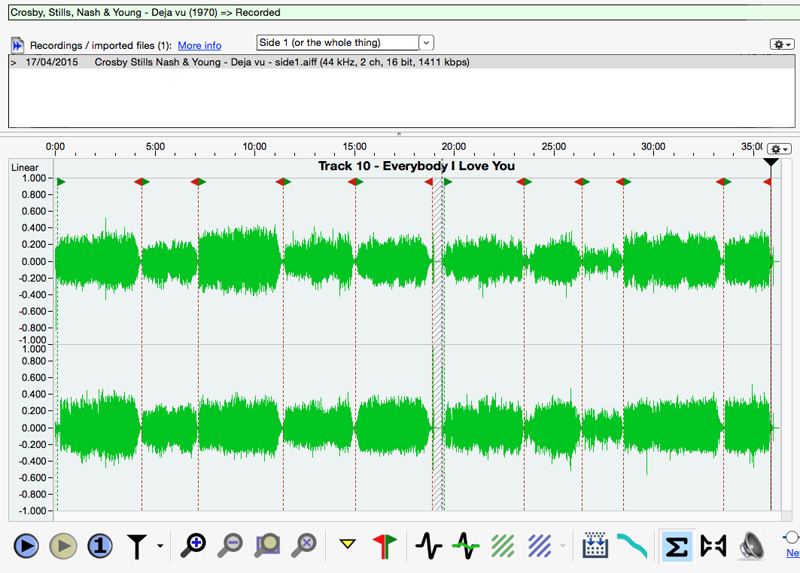
It does an excellent job of not confusing percussion with clicks.
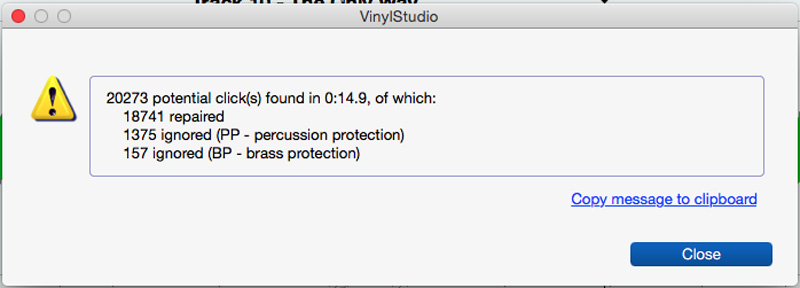
Between the Track Spitting Tool and Audio Cleanup the user can do all sorts of additional editing. None of which I have needed. At this point, the user can burn a CD or Save the tracks. I am not going to burn CD’s because that is the point of this whole digitizing exercise, to reduce the clutter.
Save Tracks
The software saves the entire album and will, once set up, convert the files to ACC format and save the Album to iTunes. If you found the Artwork, you are done. The album in iTunes is there just as if you purchased it from the iTunes Store. Simple and brilliant.
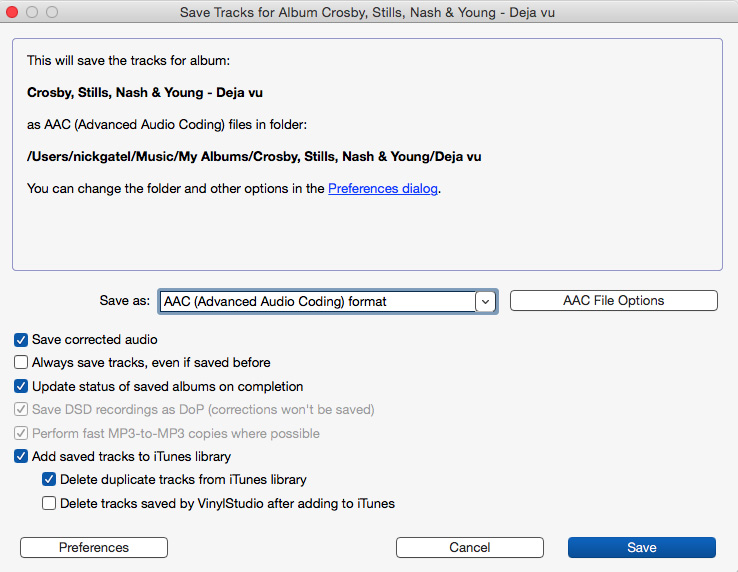
Once set up, VinylStudio will automatically open iTunes and save everything where it is supposed to be.
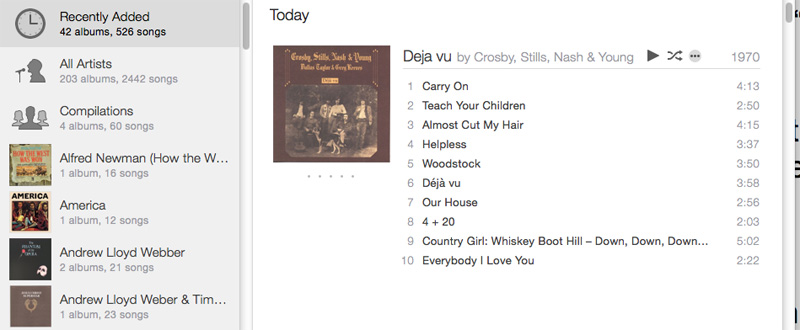
If for some reason you couldn’t find the artwork, you can right click the album in iTunes and it will search for the artwork. This works about 25% of the time. The rest of the time, I download a JPG file and use iTunes’ “Get Info” function to upload the picture.
Most albums take me about 5 minutes to do all this editing and saving. Of course, I have to sit and listen to the music while it is being recorded, which has been a lot of fun.
Other Notes
VinylStudio saves the files for your device, which for an Apple device is MPEG-4 Audio file (.m4a). It also saves the file in VinylStudio’s native format AIFF at 44 kHz 16 bit, which is a huge fie. A singe album is usually over 500MB, but the good thing is you can go back and edit the original file and re-save it to your playback device. Just make sure you have a large backup drive J
A friend told me some of the albums are worth quite a bit of money and all of them are collectable. To sell them would probably require me to take pictures of each album and post it on eBay. Then I would have to deal with those who buy them, make sure they pay, package and ship them. That would take a lot of time, time I could spend doing something important like backpacking or camping.
So I am going to take all the records, the turntables, cables, manual, the book cases, and the rest of the paraphernalia and donate all of it to my favorite local charity, while I enjoy my much smaller entertainment center, streaming music to it with my “i” devices.